
设计单位 Sthapotik
项目地点 孟加拉国达卡
建成时间 2022年
建筑面积 196.58平方米
项目简介
该项目的业主是孟加拉国一位著名的科学家,他是曼尼甘杰著名的宗教领袖,被当地人尊称为“Pir”的Shah Muhammad Mohsin Khan的长子,该项目是业主的祖先的陵墓。业主委托建筑师Sharif Uddin Ahammed博士在他的家乡曼尼甘杰的希久利设计陵墓,以缅怀他的领袖父亲,并在这里建立一个使用伊斯兰知识来改善社会的机构。现有的墓地属于业主的父亲Shah Muhammad Mohsin Khan Uwaisi、祖父Shah Muhammad Ismail khan Uwaisi和母亲Begum Noorjahan,而另一个墓地是他为自己而留。由于“Pir”在当地传播和实践伊斯兰知识做出的贡献,因此该项目对当地非常重要。
The Project is owned by a renowned Scientist of Bangladesh and he is the eldest son of ‘Pir’ Shah Muhammad Mohsin Khan, who was the famous religious leader of the Manikgonj. The project is the ancestral dargah of the owner. He commissioned Ar. Md. Sharif Uddin Ahammed for designing the Dargah (mausoleum) in his native home Hijuli, Manikgong, to reminisce the memory of the ‘Pir’ and develop an institution for exercising Islamic Knowledge for the betterment of society. Existing graves belong to ‘Pir’ Shah Muhammad Mohsin Khan Uwaisi (Father), Shah Muhammad Ismail khan Uwaisi (Grand Father), and Begum Noorjahan (Mother). Another grave space has been reserved for the owner himself. The project holds much importance due to the contribution of the ‘Pir’ in spreading Islamic knowledge and practice in the locality.
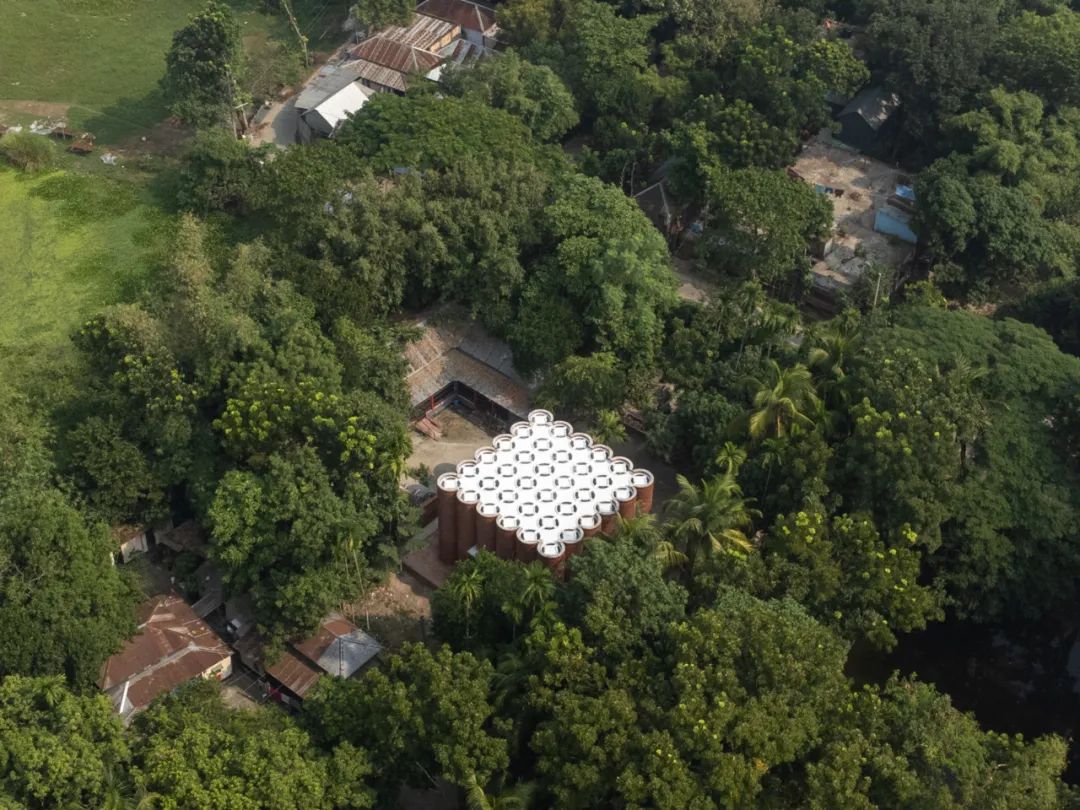
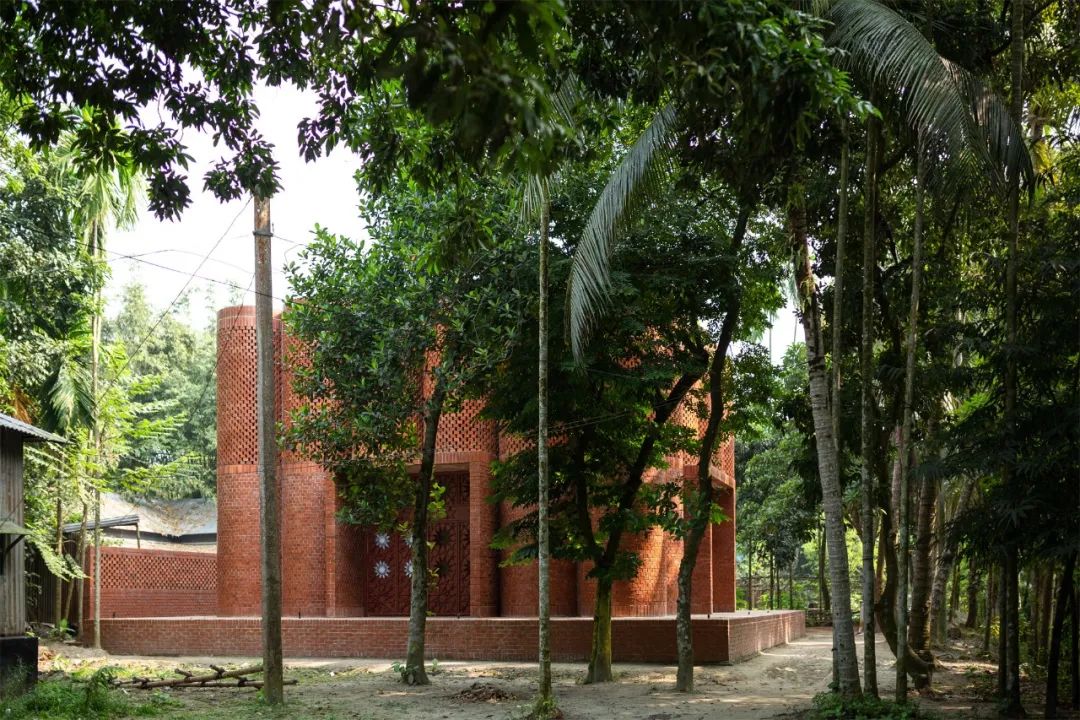

背景
苏菲主义(Sufism)是伊斯兰教中最令人惊奇、最发人深省的一个流派。苏菲主义源于哲学和社会的观点,注重与真主安拉的亲近(Schimmel,A.,1975)。苏菲派圣徒通过他们对宗教和传教热情、模范的品格和人道主义活动参与了伊斯兰教在孟加拉的传播,他们甚至作为统治者的顾问参与地区政治,并对他们从事人道主义工作产生影响。Uwaisi是苏菲主义的一条传播途径,它由Owais al-Qarani命名,在精神上对伊斯兰神秘主义词汇进行传播。该项目是致力于传播Uwaisi的“Pir”(苏菲教精神领袖)的陵墓。虽然“Pir”这个词是波斯语,但由于波斯圣徒在该地区传播伊斯兰教的影响,因此它在当地进行了本土化改革。“Pir”的墓地一般埋葬在其住所内,而前任“Pir”决定在现有的墓地上建造一个独特的陵墓结构,以纪念其事迹和贡献。
Sufism is one most amazing, thought-provoking aspects of Islam. Sufism is derived from a more philosophical and social standpoint focusing on closeness to Allah (Schimmel, A., 1975). The Sufi saints were involved in the spread of Islam in Bengal through their religious and missionary zeal, exemplary character and humanitarian activities. They even involve in regional politics as advisors to the ruler and influence them to do humanitarian work. The Uwaisi is a Tariqa (pathway) of Sufism that spiritually transmitted the vocabulary of Islamic mysticism, named after Owais al-Qarani. The project is a Dargah for the ‘Pir’ of Uwaisi Tariqa. Though the word ‘Pir’ is a Persian word, it was locally adapted due to the role of the Persian saints in spreading Islam in this region. Existing graves were originally buried inside the residence of the ‘Pir’. Later on, the ancestors of the ‘Pir’ decided to build a unique (mausoleum) structure over the graves regarding Pir’s memory and contributions.
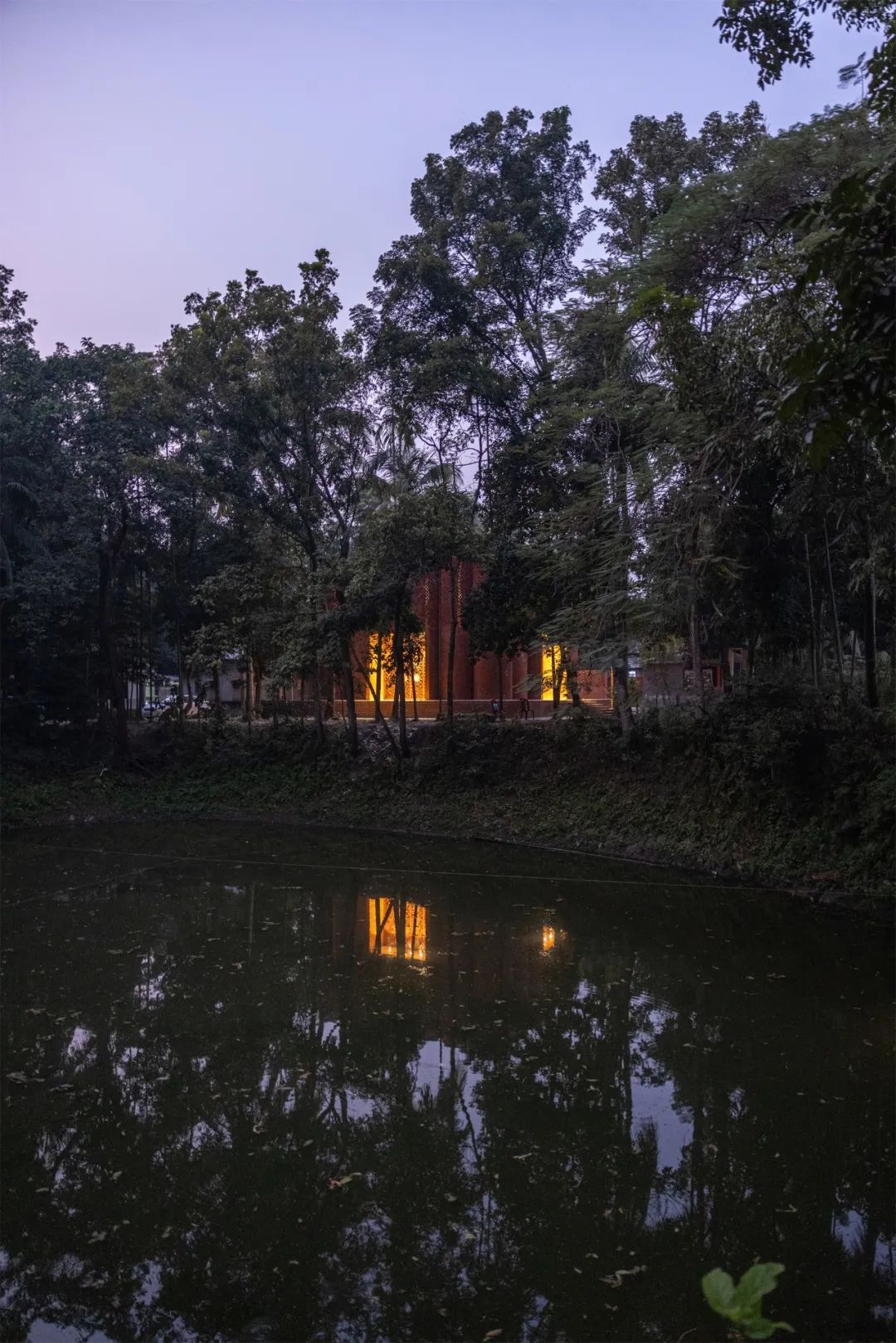

孟加拉在历史上曾被不同的势力统治过,这片土地也由此成为了多学科文化、信仰和哲学的家园。同时,它也以一种谦逊的姿态适应了所有的多样性,随后在文化、宗教信仰和建筑方面都展现出独特的特点。从13世纪开始直到18世纪中叶,英国占领孟加拉期间,孟加拉一直被穆斯林统治,其中几乎四分之三的清真寺都是在独立的苏丹国时期(1342年至1576年)建造的。苏丹时期的清真寺和陵墓大多是方形的。虽然在孟加拉仅发现了少量的陵墓,但它们依然显示出传统伊斯兰形式的显著多样性和有趣的适应性。Dargah陵墓的形成便受到苏丹时期清真寺和陵墓的高度启发。
Bengal has been ruled by diverse powers over the course of time. The very land became the home of multidisciplinary cultures, beliefs and philosophies. And, it humbly adapted to all the diversity and subsequently developed unique characteristics in terms of culture, religious beliefs and architecture. From the 13th century, until the British captured Bengal in the middle of the 18th century, Bengal was ruled by Muslims. Almost three-quarters of mosques were built in Bengal during the independent Sultanate period (1342 to 1576). The mosques and tombs of the Sultani period were mostly Square-plan. Though small numbers of tombs are found in Bengal, they show significant variety and interesting adaptation of the conventional Islamic form to regional tastes and requirements. The formation and materiality of the Dargah are highly inspired by the Sultani period’s mosques and Tombs.
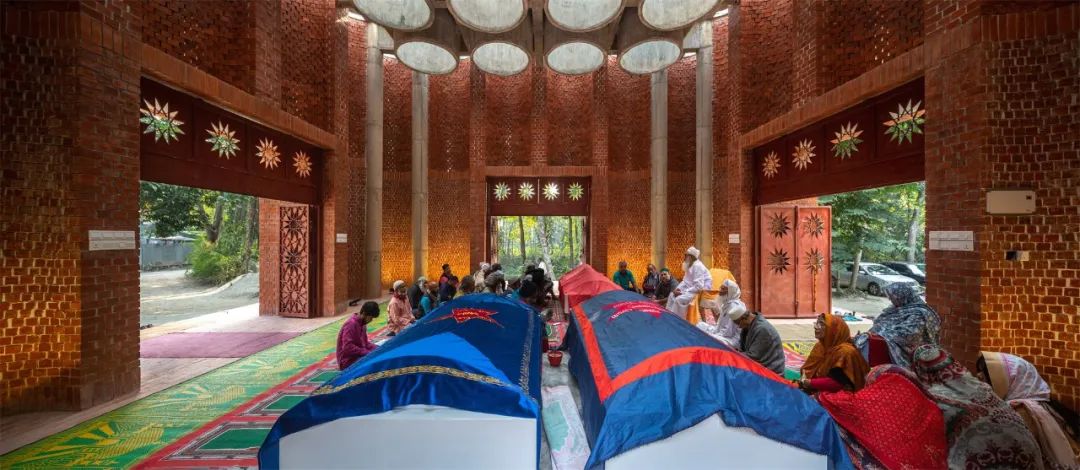
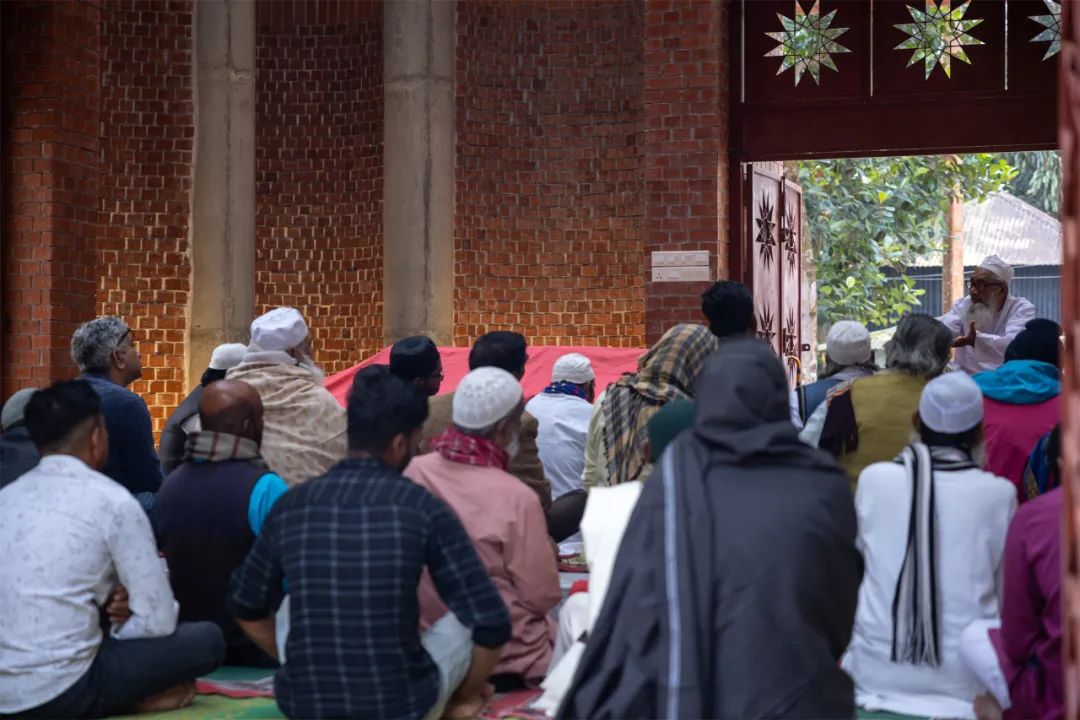
概念:天堂的枝形吊灯
设计方法随着技术、可用资源、意识形态和当地文化的发展而发展,并转化为当地社区容易采用的综合解决手段。一般来说,Dargah是指一个受人尊敬的宗教人物(通常是苏菲派的圣人或苦行僧)的陵墓。在波斯语中,Dargah的意思是“门户”,有一种比喻说,Dargah是人们现实躯体的家,而灵魂通过入口到达天堂,天堂的枝形吊灯通过用圣光祝福他们,将尘世身体与更高层次的力量相连结。
The Design approach evolves with techniques, available resources, ideology, and local culture and transforms these into an integrated solution that is naturally adopted by the local community. Generally, a Dargah is a home for the grave of a revered religious figure, often a Sufi saint or dervish. In Persian “Dargah” means "Portal". Metaphorically, Dargah is the home for the earthly body and the soul travels to paradise through the portal and the chandelier of paradise connects the earthly body to the higher power by blessing them with holy light. The presence of graves and the pattern painted by the light of the chandelier creates a mysterious celestial ambience that intrigues a spiritual notion in human minds. The outer shell is the replication of our reality but the inner space moves the reality beyond it.


形式生成
方形单体主要用于次大陆伊斯兰教的陵墓建筑中(Koch, E. 1991),而这些陵墓的灵感主要来自孟加拉小屋的传统结构。Dargah陵墓的平面采用相同的方形平面,尺寸为36×36英尺(约11×11米),在白色大理石平台上可容纳三个坟墓。与传统的Vitti小屋不同,Dargah陵墓的基座有3英尺(约0.9米)高。
The square single unit was primarily used for tombs in this subcontinent Islamic architecture, (Koch, E. 1991). These tombs were mostly inspired by the traditional structure of the Bengal huts. The plan of Dargah adopted the same square shape plan measuring 36’x36’ and accommodates three graves on a white marble platform. Unlike the Vitti, of the traditional huts the plinth of the Dargah is also raised up to 3’.
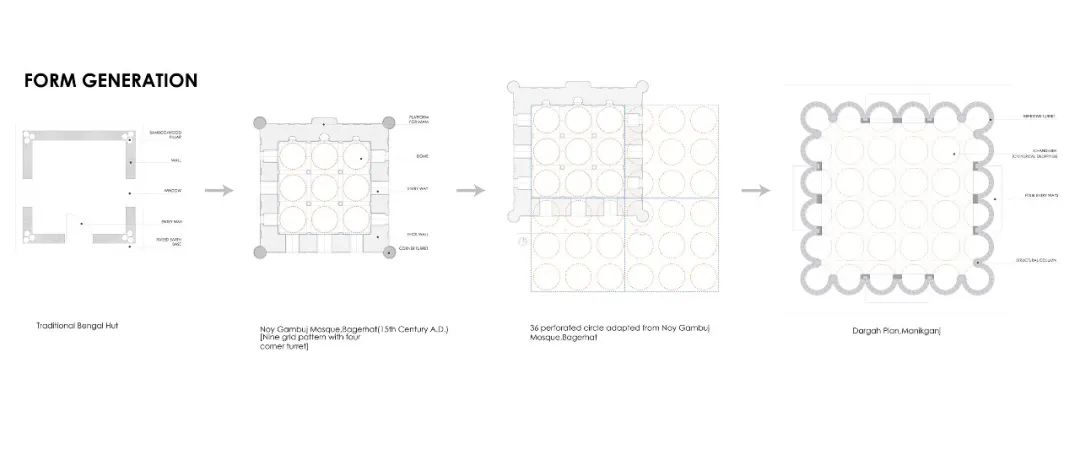
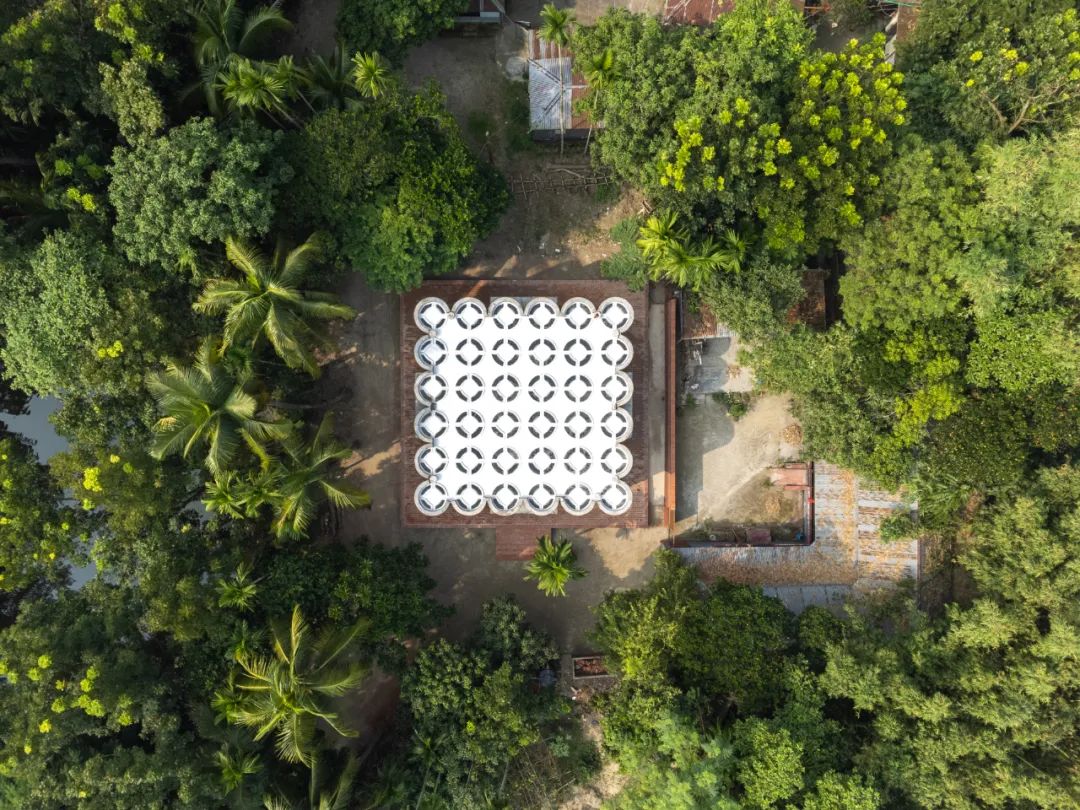
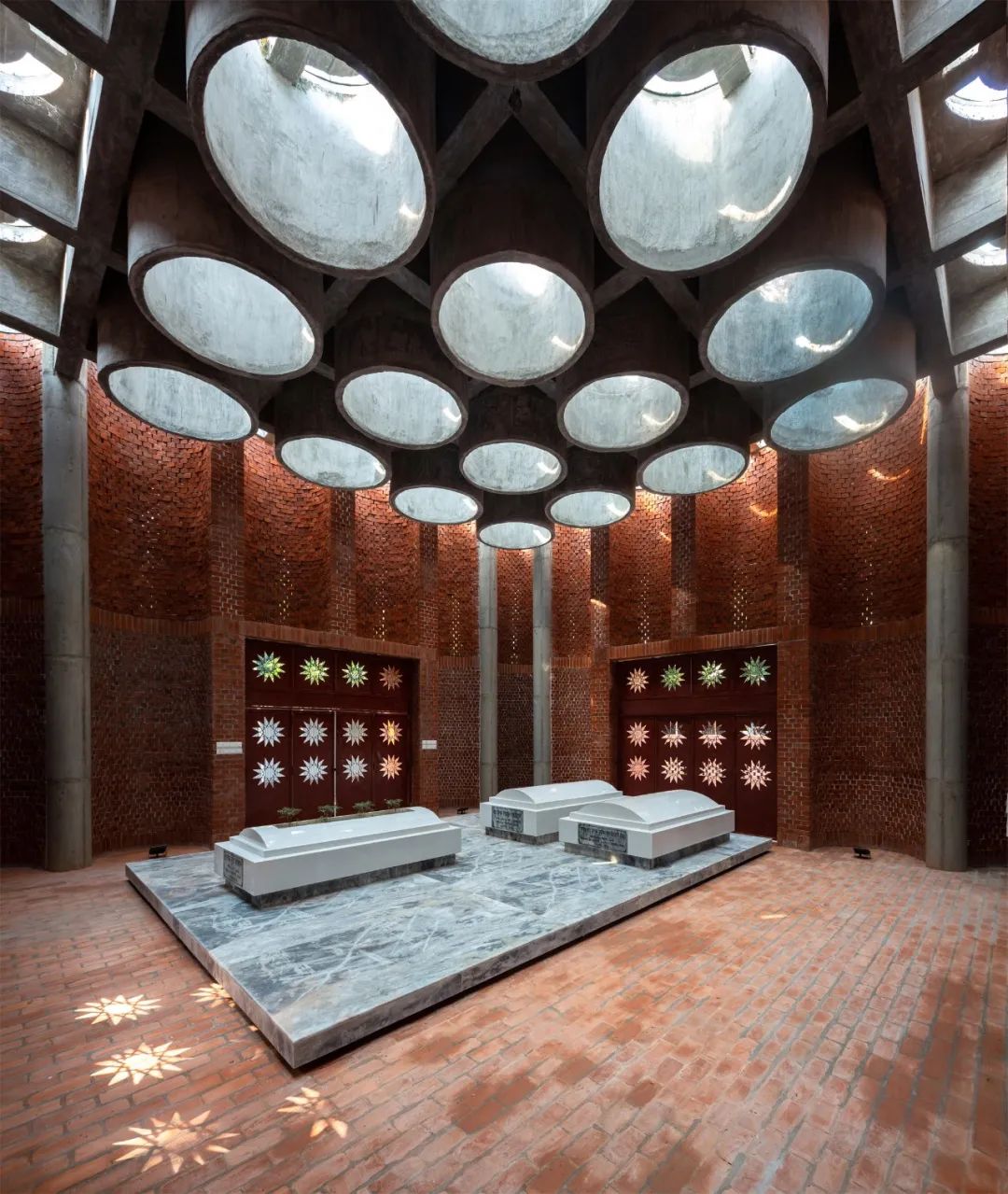
该项目很好地融入了住宅区的自然环境中,因此设计期望让入口呈现一种非正式和自然的状态,而不是创造一个明显的入口。此外,该入口以一个三维的体量的形式嵌入圆柱体结构中。
The project Blend in a natural context of a residential complex. Thus, the design tries to keep the approach informal and natural instead of creating an obvious entrance. Moreover, the approach hits the corner of the structure, giving a three-dimensional idea of the massing.

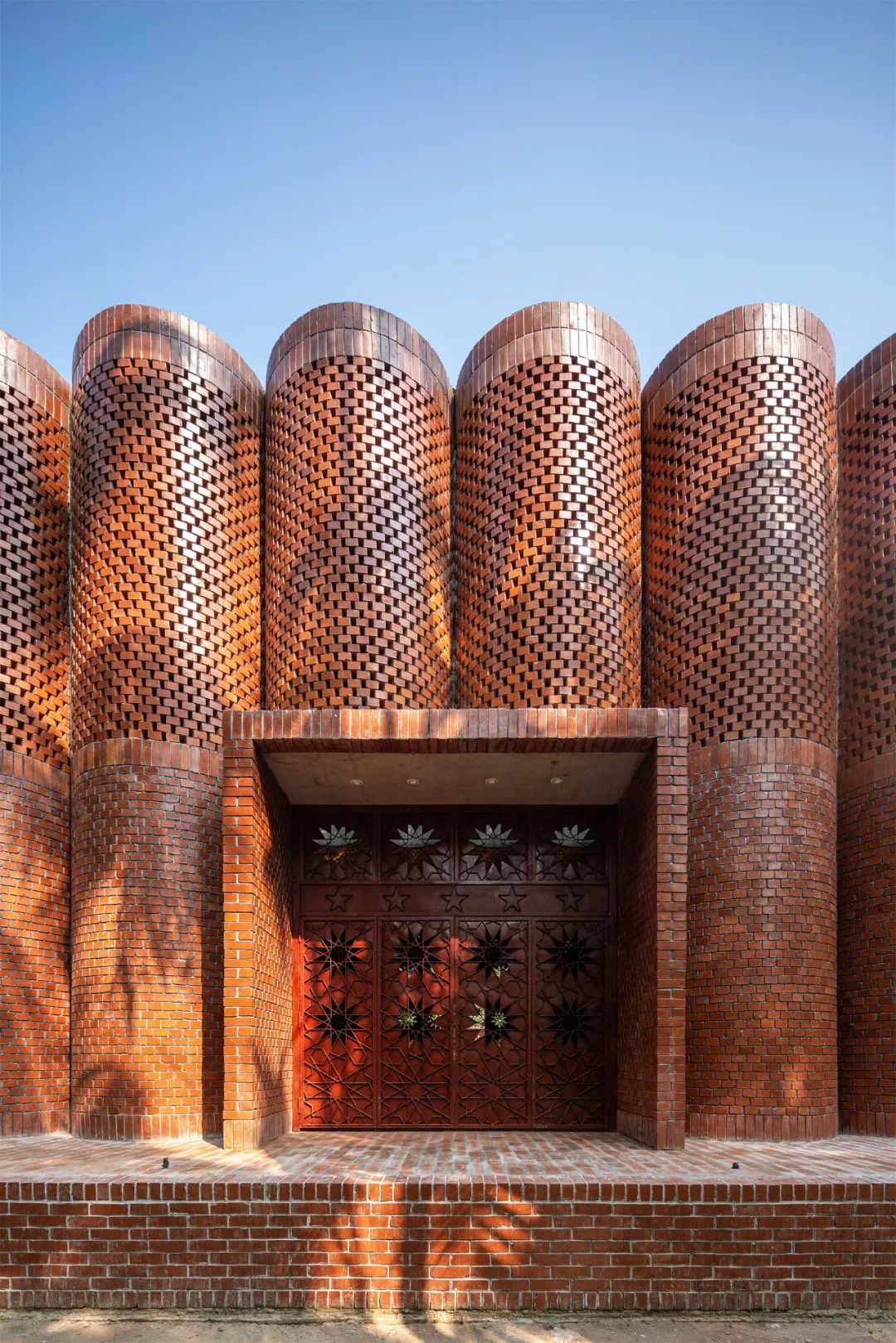
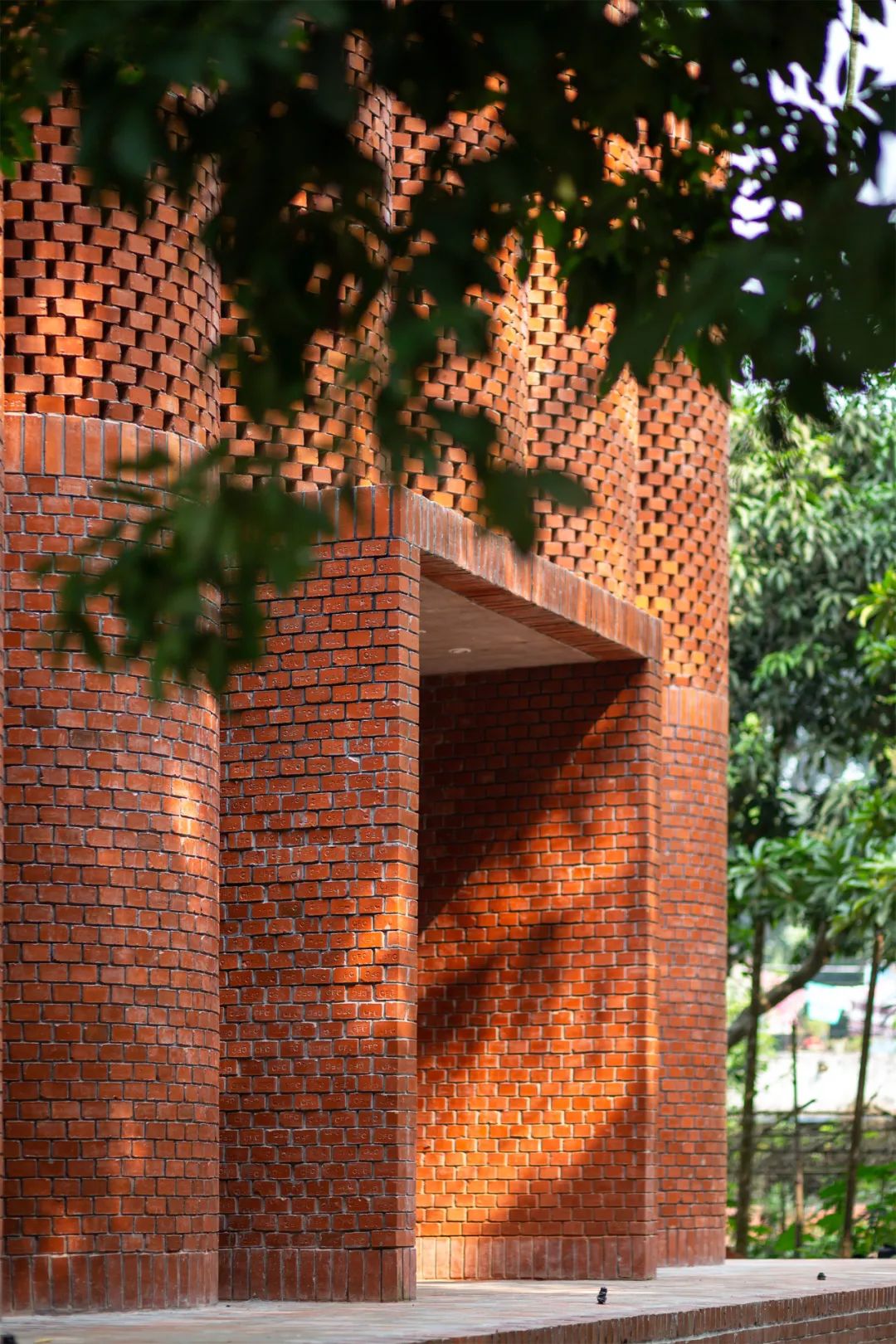
在3英尺(约0.9米)的方形基座上,桶状结构的高度几乎是24英尺(约7.3米)。天花由36个圆圈组成,设计的灵感来自苏丹时期的多圆顶清真寺,其中16个圆圈被设计成圆柱体吊顶,悬挂在华夫格的天花上。
The height of the structure is almost 24’ on a 3’ square base. The ceiling, composed of thirty-six, circles are inspired by the multi-domed mosques of the Sultani period. Out of thirty-six circular punches on the ceiling, sixteen become cylindrical droppings and hang from the waffle ceiling.


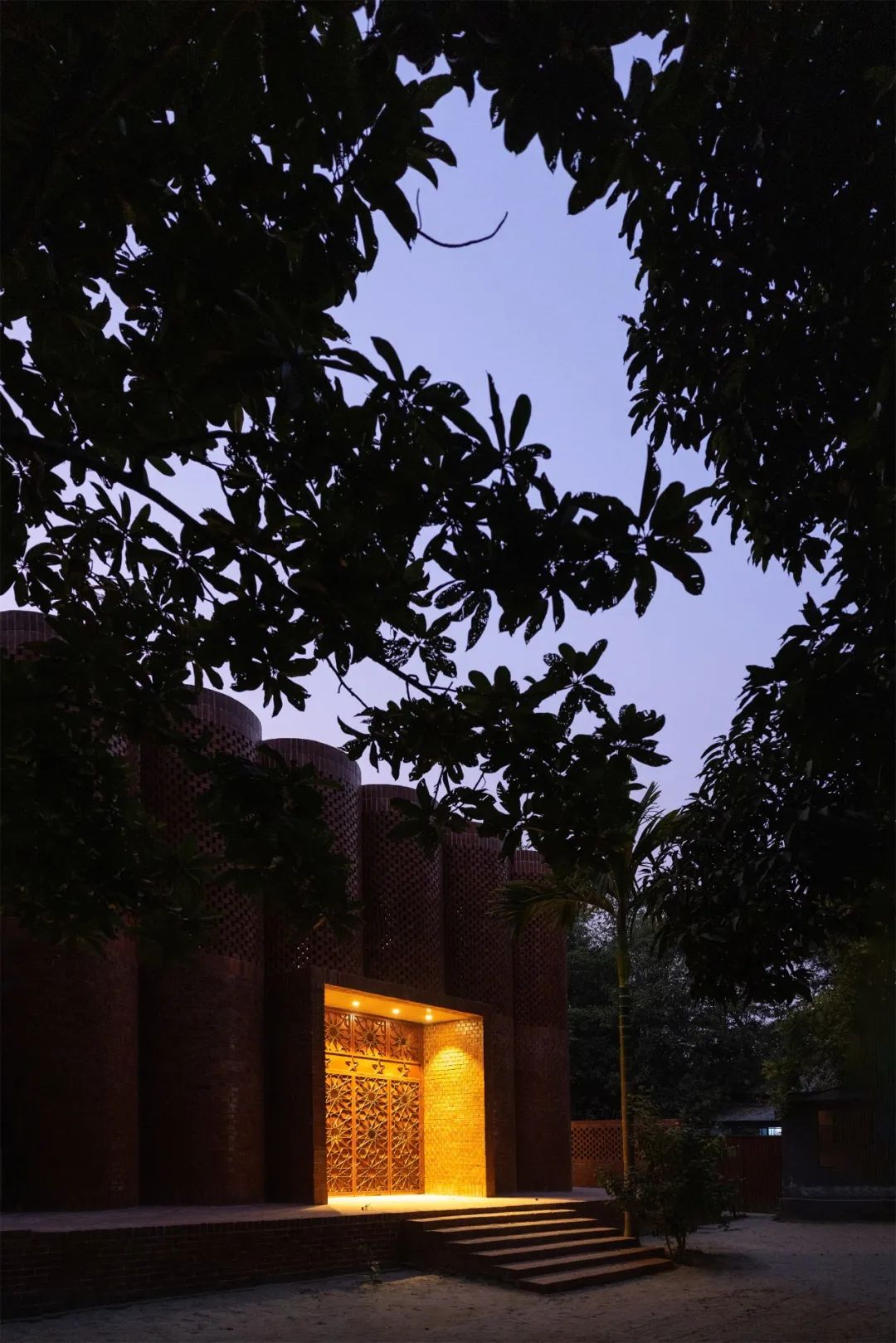
华夫格屋顶上的圆形穿孔和圆柱形吊顶被一起放置在一盏充满活力的枝形吊灯中。自然光通过枝形吊灯渗透进内部,在地板上形成自然的图案。为了建立结构的重要性,建筑还使用了苏丹时期清真寺经常使用的角楼形式。该陵墓的侧立面由重复的圆形塔楼组成,创造出一种熟悉而又具有标志性的构图,吸引了当地社区的关注。改造后的角楼是半圆形的,上部穿孔以用于自然采光和通风。
The circular punches and hanging cylindrical droppings from the waffle roof all together appeared in a dynamic chandelier. Natural light seeps into the Dargah through the chandelier and creates a natural pattern on the floor. To establish the significance of any structure the corner turrets were frequently used in Sultani period Mosques. The side elevations of the Dargah are composed of reinvented repetitive turrets creating a familiar yet iconic composition that draws the attention of the community. The turrets are half circular and the upper part is perforated with jalis’for natural lighting and ventilation.


施工手法
由于当地资源的限制,项目雇佣了当地的泥瓦匠,并使用了当地的施工技术进行建造。由于当地竹子的自然长度的限制,脚手架需要分三次搭建才能建造出21英尺(约6.4米)高的天花板。施工中最具挑战性的部分是使用当地的施工技艺将6英尺(约1.8米)的混凝土圆柱形吊顶从华夫格天花上悬挂下来。施工时我们首先浇铸带圆形孔洞的华夫格天花,然后在上面悬挂的吊顶圆柱形结构。每个区域下落的圆柱体中都需要四个金属模板制成,每个部分由两个3英尺(约0.9米)高的部件组成,以便在华夫格天花结构之间浇筑6英尺(约1.8米)的吊顶。
Local masons and construction methods were employed due to the limited resources. Because of the natural length of locally found bamboo, the scaffolding needed to be constructed in three tries to construct the 21’ high ceiling. The most challenging part of the construction was hanging 6’ concrete cylindrical droppings from the waffle slab by using local construction techniques. Firstly, the waffle slab with circular perforation was cast then the cylindrical droppings were hung from it. Each of the cylindrical droppings required four parts of metal shuttering and every part consisted of two divisions of 3’ height to cast the 6’ droppings in between waffle structures.
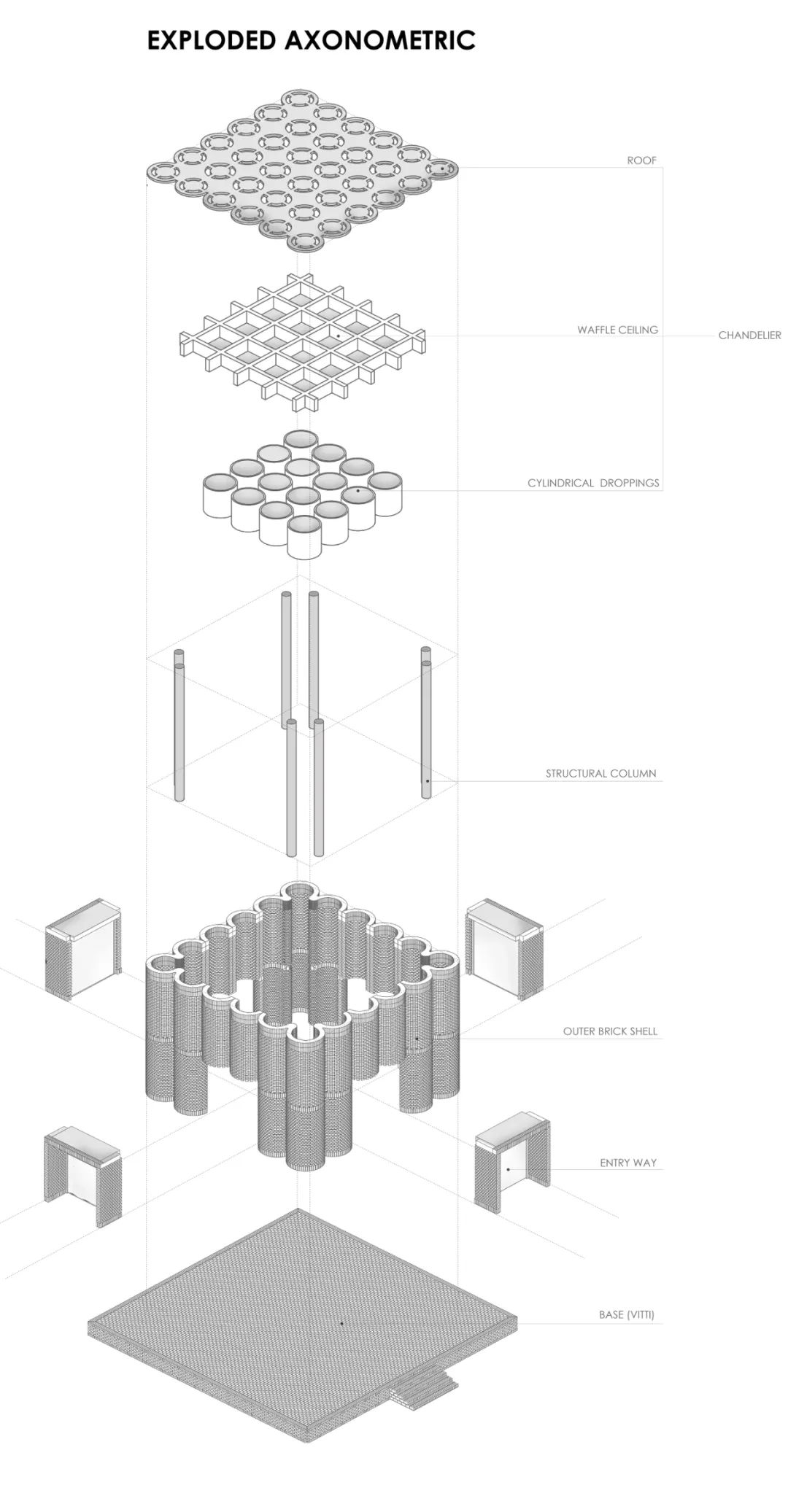
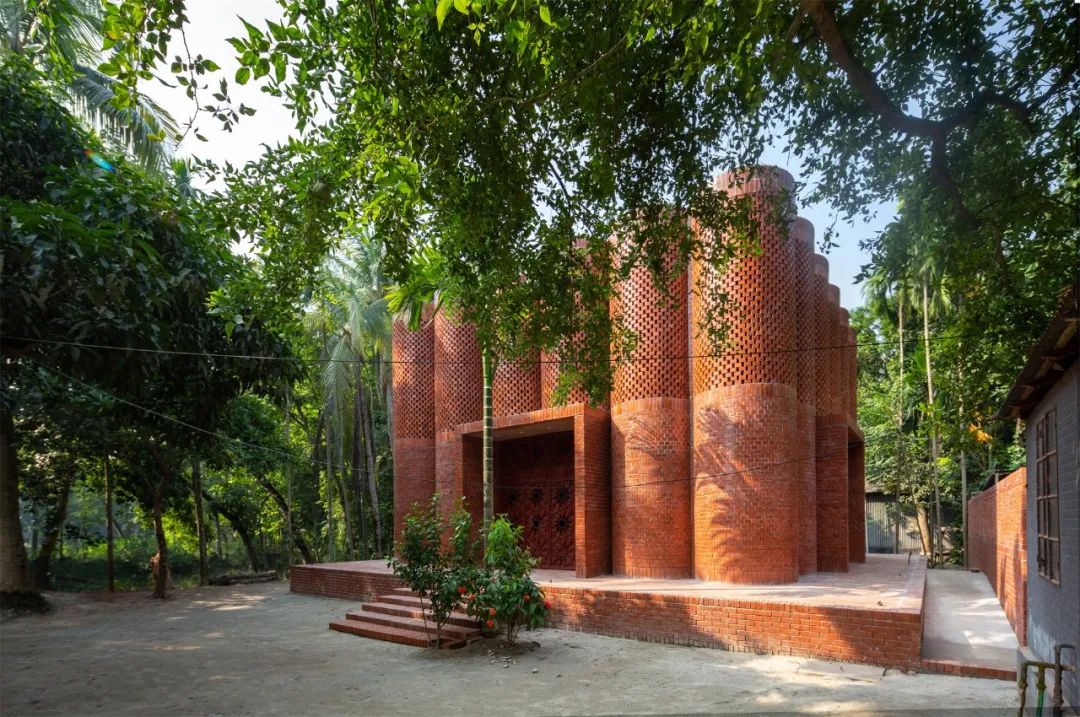
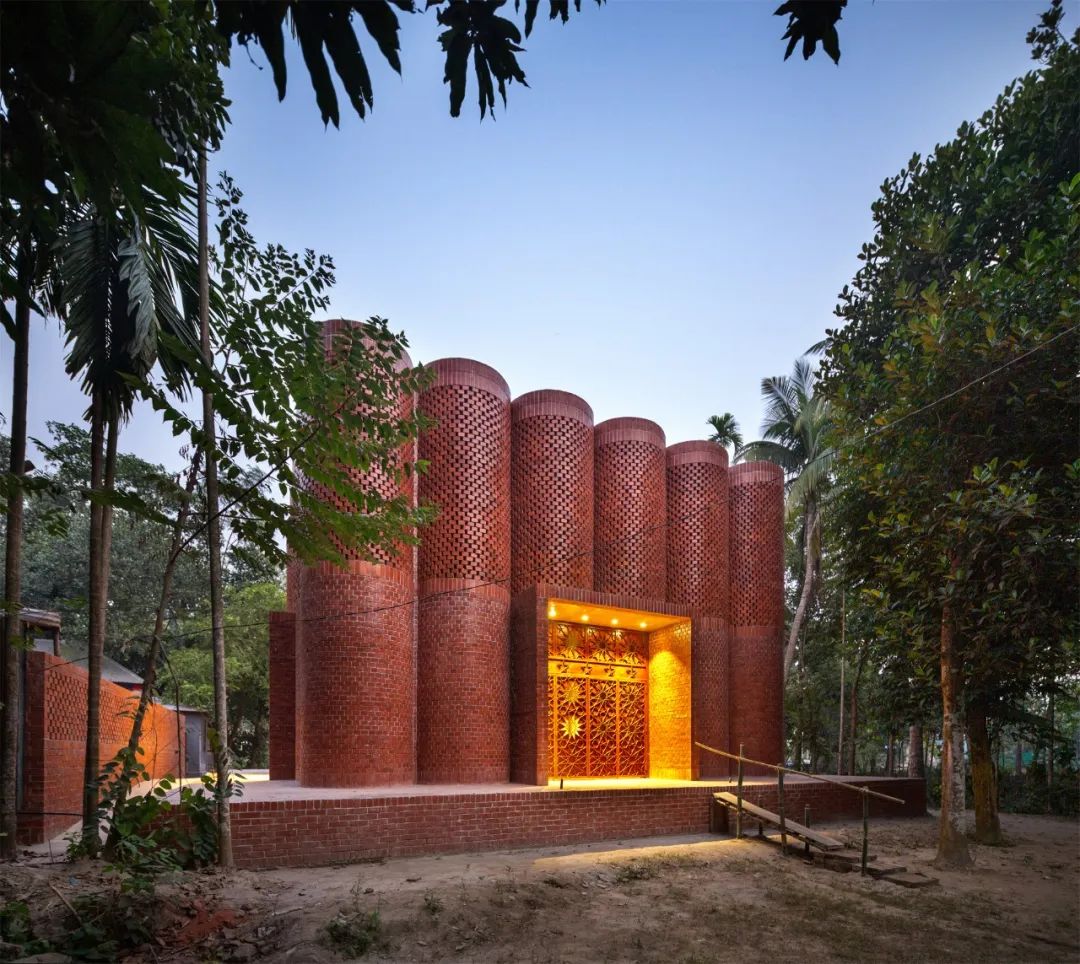
自然光通过穿孔板渗透到圆柱形的吊顶中,创造出戏剧性的氛围。半圆形砖塔楼的浇筑参考了吊灯天花板的边缘。
Natural light seeped through the perforated slab bouncing inside the cylindrical droppings, creating a dramatic ambience. The half-circular brick turrets are cast in reference to the edge of the chandelier ceiling.


材料
砖在孟加拉的使用历史可以追溯到中世纪的佛教寺院。在苏丹时期,砖和陶土装饰是作为建筑围合的主要材料。当地社区认可红砖坚固的结构和张力,为了达到设计的统一性和创造性,用红砖作为陵墓的外壳和地基。为了完全地实现本地化,自然烧制的红砖都是从附近的砖场手工挑选的。
Brick dates in Bengal from the Buddhist Monasteries in the medieval period. In the Sultani period, brick and terracotta decoration was the primary material for the enclosure. Moreover, the community robustly recognizes the boldness of the red brick structure. To Achieve uniformity and create significance only red brick is used as the envelope and the base of the Dargah. To achieve localization in every sense naturally burned red bricks were hand-picked from the nearby brick field.

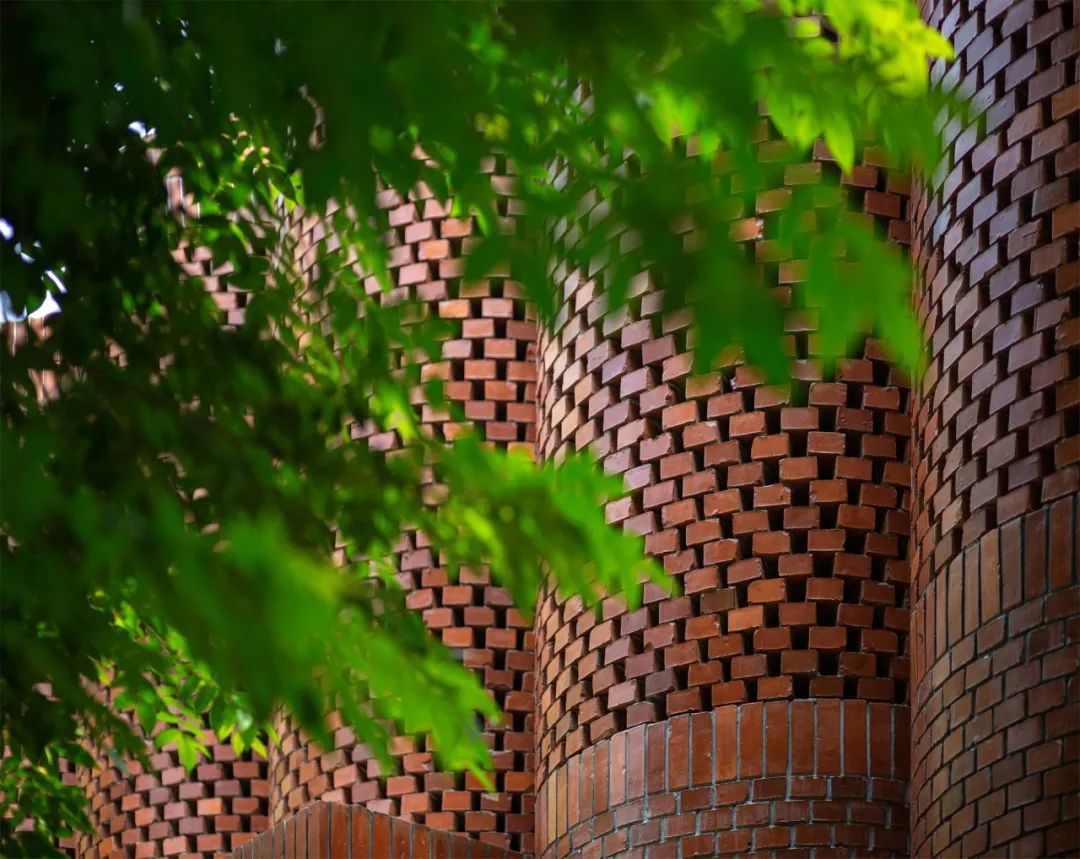
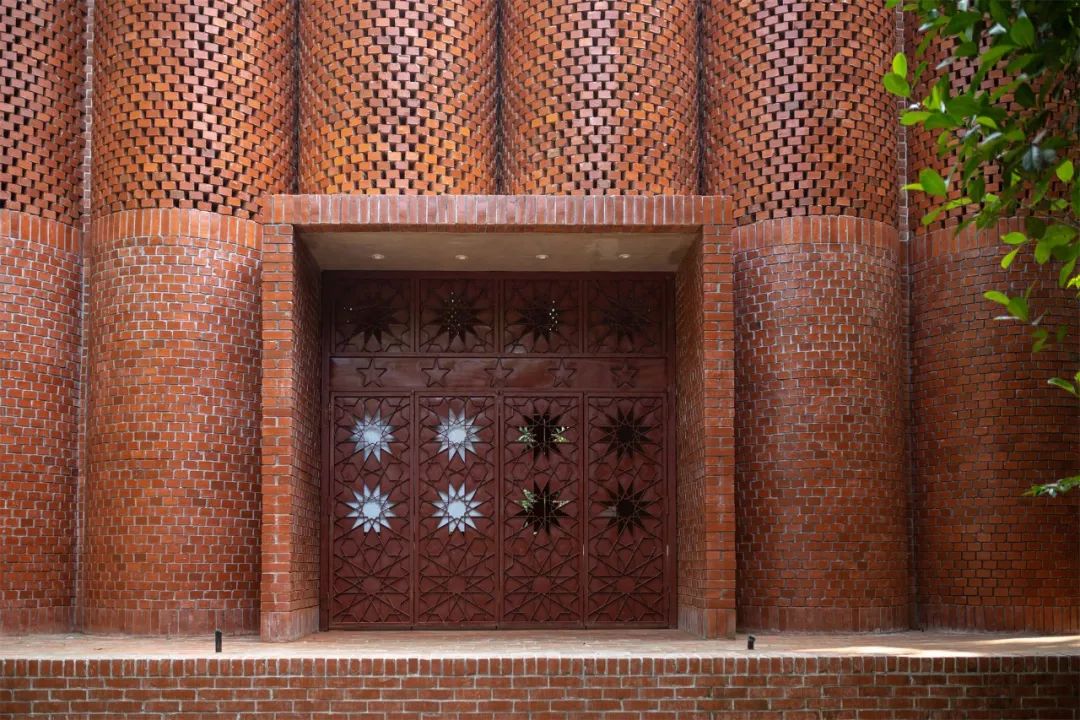
作为结构构件的柱、板和圆柱形吊顶都是由混凝土制成的,因为它们能够支持更大的跨度、圆柱体吊顶的载荷以及施工的灵活性。最终,三个坟墓被安置在砖地板上凸起的白色大理石基座上。
Structural elements—columns, slabs, and cylindrical droppings—are made of concrete because of their functional need to support the bigger span and load of the droppings, and flexibility in construction. Three graves are placed on a raised white marble base on the brick floor.
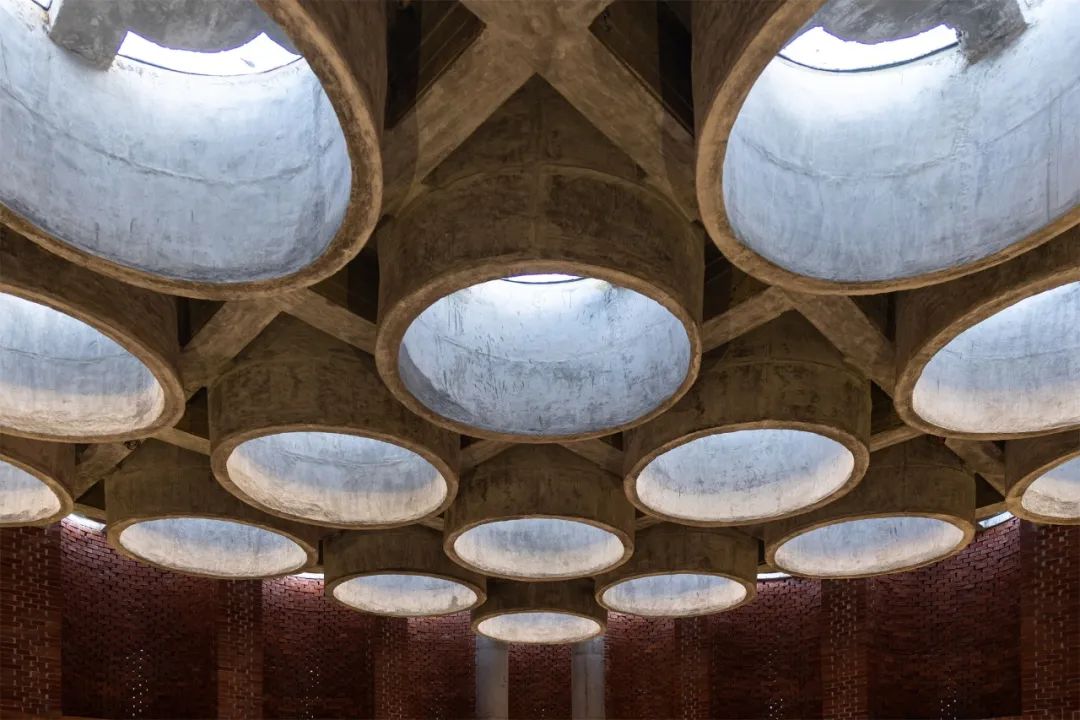
设计图纸 ▽

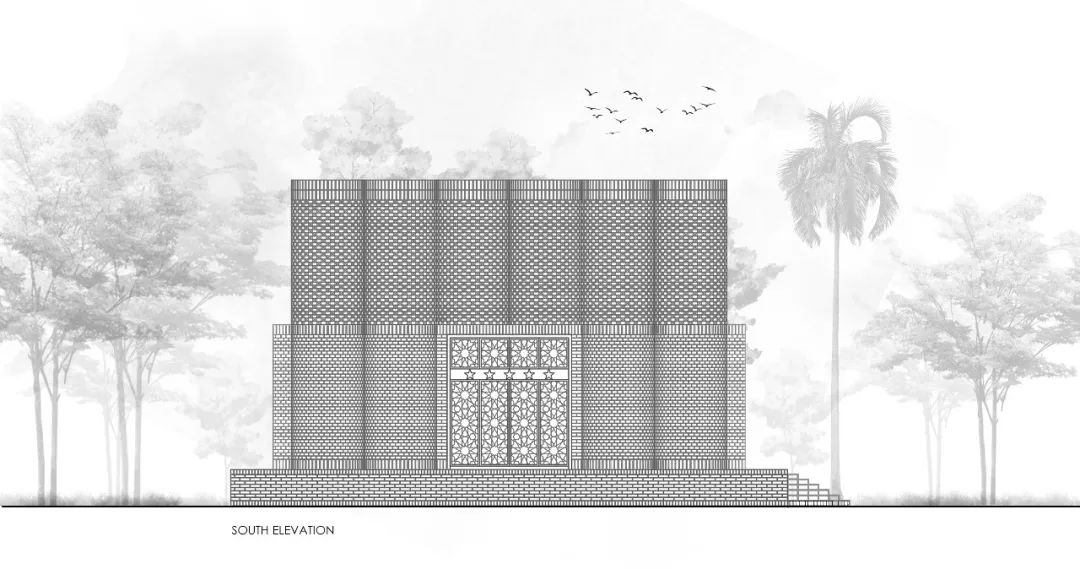

完整项目信息
Office Name: Sthapotik
Firm Location: Sthapotik, Unit #1B, House #8/2 Block #D, Lalmatia, Dhaka-1207, Bangladesh.
Completion Year: 2022
Gross Built Area (m2/ ft2): 2116sqft With Base
Basic Structure area: 36x36 sqft, 1296sqft
Project Location: Shib Bari, Hijuli, Manikgong, Dhaka, Bangladesh
Program / Use / Building Function: Ancestral mouse
Lead Architects: Ar. Md. Sharif Uddin Ahammed
Project Team: Ar. Md. Sharif Uddin Ahammed, Ar. S.M. Mushhfiqul Karim, Ar. Sadeka Badiozzamman
Documentation Team: Ar. Md. Sharif Uddin Ahammed, Ar. Syeda Saikha Sudah, Ar. Asifa Jamal
Photographer: Asif Salman
版权声明:本文由Sthapotik授权发布。欢迎转发,禁止以有方编辑版本转载。
投稿邮箱:media@archiposition.com
上一篇:浙大院新作:富阳银湖体育中心,亚运射击射箭现代五项馆
下一篇:二等奖方案 | 江西信丰高铁新城概念规划暨城市设计 / 深规院+Aedas+麦垦景观